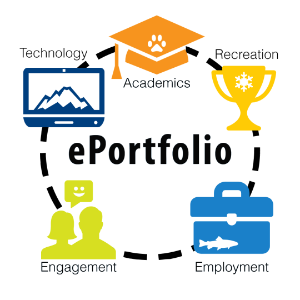


What is an ePortfolio?
"An ePortfolio is an online biography for students to share the highlights of their collegiate career with prospective employers or graduate and professional school selection committees. A fully developed portfolio should offer a broader sense of who you are, what you have accomplished and what you hope to achieve. The ePortfolio should be designed as a self-narrative and serve as an invitation for employers and selection committees to get to know you.
This is a tool that can extend past your time in the Honors College. This portfolio is yours to maintain and update for the years to come. It is a fluid document which can change and grow with you both professionally and intellectually."
From What is an ePortfolio? - University of Houston (uh.edu)
"Learning takes many shapes and forms. And there are many ways to remember, think about and display what you’re learning. During the 17th century and beyond, an educated person would often assemble a 'cabinet of curiosities,' a small, personal museum to bring together the moments and process of learning in a place for recalling, reflecting, and sharing.
That’s what an eportfolio can be for you. It’s a digital 'place,' an online cabinet of curiosities, a museum of you. You get to build it, put your artifacts into it, design it, redesign it, think about, show it to other people, get their comments, and tell them what you think."
From Eportfolios@Macaulay – Your Cabinet of Curiosities (cuny.edu)
Portfolio: Reflective Component
"The structure of a portfolio can vary greatly, depending on purpose and goals and whether it is created electronically, on paper, or in some other alternative media (as in the case of portfolio video productions). The e-portfolio offers the advantage of allowing organized, embedded links to selected supporting information such as scanned essays in drafts with improvements from feedback, performance on exams, homework assignments, lab reports, videos of class or conference presentations, photos, samples of creative work, research results, résumé, letters of support or evaluation, internship evaluations, learning journals of travel-study ventures or service endeavors, and more. The reflective component is at the center, helping to tie together the various other dimensions of the portfolio."
From Zubizarreta, John. “Good Practice: Improving and Assessing Honors Student Learning With Learning Portfolios.” Journal of the European Honors Council, vol. 3, no. 1, Jan. 2019, pp. 1–9. https://doi.org/10.31378/jehc.73.
"The single most important skill to help potential employees get in the door is the ability to self-reflect and to be able to articulate the connections between their experiences and the needs of the job they are applying for. They need to be able to concisely articulate what they did (skill, competency or ability), how they did it (a story), and why they did it (thought process about the choices they made). Creating an ePortfolio is the process of engaging in collection, organization, reflection and connection that leads to a person’s ability to speak intelligently and concisely about the what, how and why. In other words, to tell the story about themselves."
From an employer at a Marylhurst University focus group, excerpted from Vicki Suter Folio Thinking | Vicki Suter (vsuter.org)



